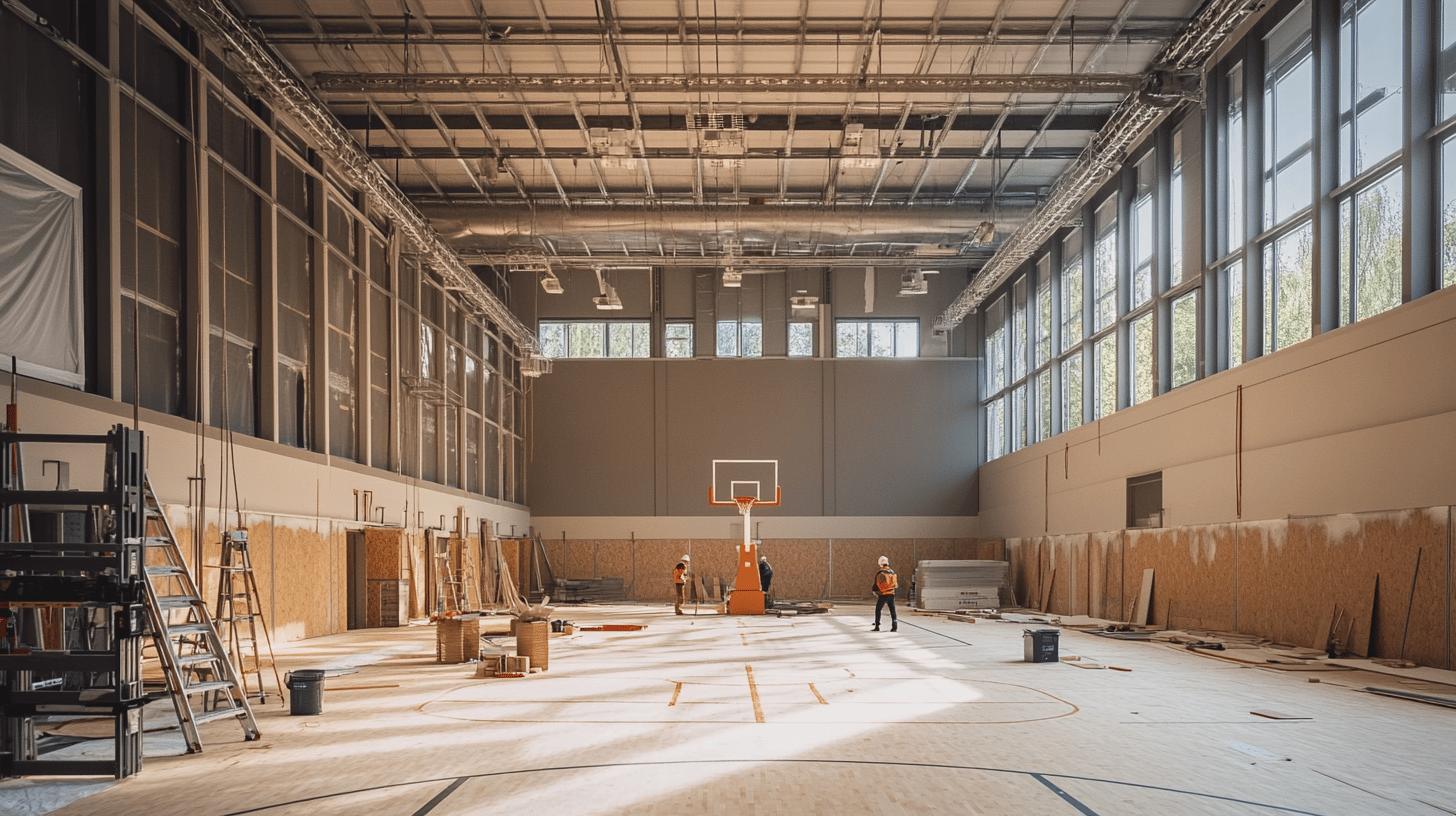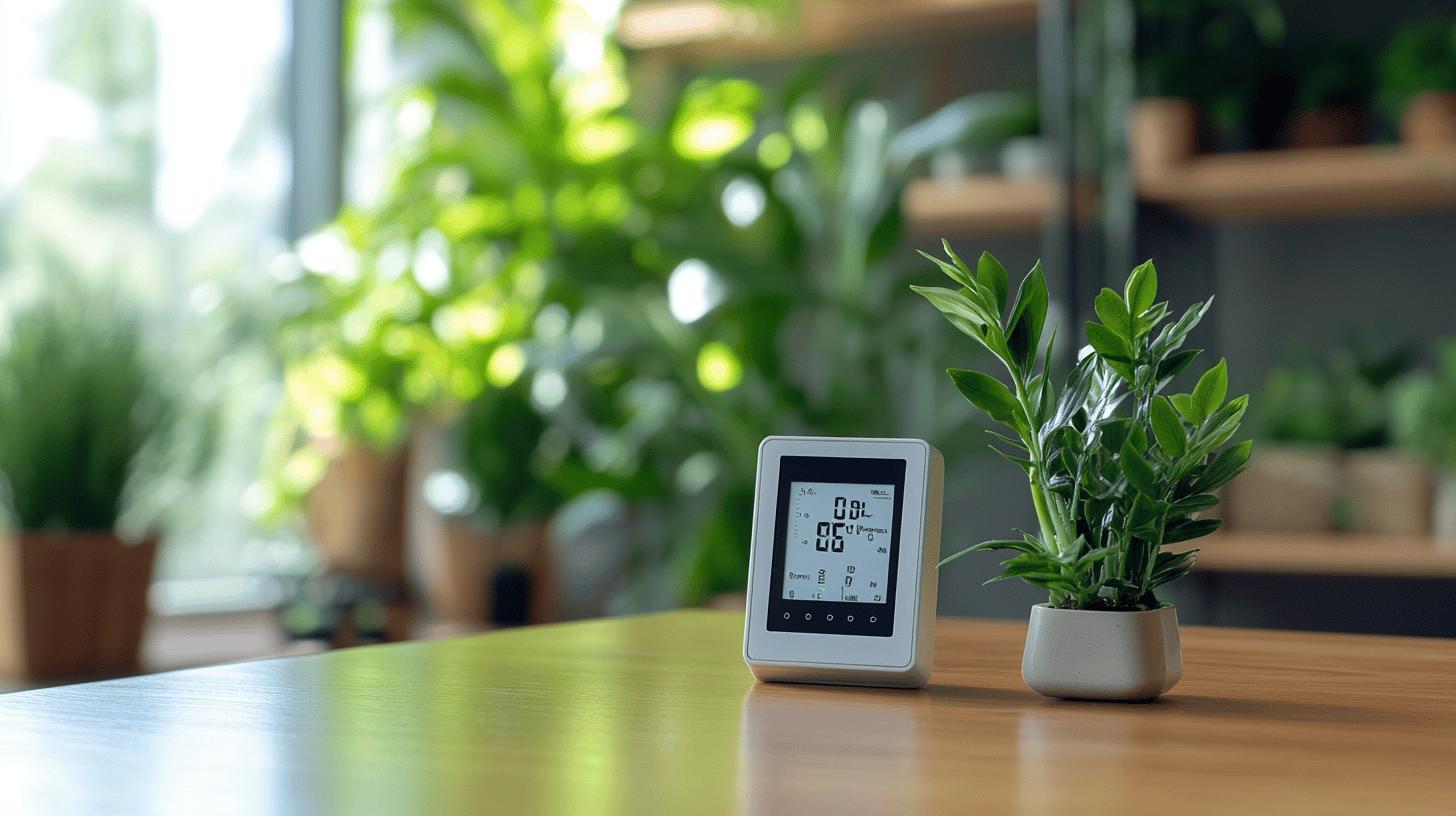Choosing Slip-Resistant Coatings is a big deal for keeping places safe, especially where it gets wet. Think about how many times someone nearly slips when it’s raining or after a good downpour. It’s not just about avoiding a nasty fall, it’s also about making sure everyone feels secure when they walk in or out. There are loads of ways to make surfaces less slippery, from special mats to clever paints. Knowing what causes slips and what products work best can make a real difference. Plus, looking after these solutions means they keep working well for ages.
Key Takeaways
- Wet weather, debris, and worn surfaces are the main things that make entrances dangerous.
- Anti-slip mats, tapes, and special coatings are good ways to make things safer.
- Getting the surface ready, measuring right, and putting solutions on properly helps them work.
- Cleaning often, checking for wear, and making sure water drains away helps anti-slip stuff last.
- Different surfaces like concrete, wood, and tiles need specific anti-slip products to be effective.
.
Understanding Slip Hazards at Entrances

Identifying Common Wet Weather Risks
Right, let’s talk about why entrances become ice rinks the second it rains. The main culprit is, unsurprisingly, water. Rain, snow, even just morning dew can make surfaces incredibly slippery. It’s not just the water itself, but also how it interacts with the surface. Smooth surfaces become treacherous, and even slightly textured ones can lose their grip. Poor drainage makes it even worse, as standing water becomes a persistent hazard. Think about it – that little puddle you ignore could be a nasty fall waiting to happen.
- Rainwater accumulation
- Snow and ice formation
- Condensation and dew
.
Impact of Debris on Surface Traction
It’s not just water we need to worry about; debris plays a big part too. Leaves, dirt, and other bits and pieces can create a slippery layer, especially when they get wet. This is because they reduce the direct contact between your shoes and the ground. Imagine walking on ball bearings – that’s kind of what it’s like. Regular sweeping is a must, but even then, some debris is unavoidable. The type of surface also matters; some materials trap debris more easily than others. Consider slip resistance testing to ensure safety.
Keeping entrances clear of debris is a simple but effective way to reduce slip risks. It’s about more than just aesthetics; it’s about safety. A clean entrance is a safer entrance.
Recognising Worn Surface Dangers
Surfaces don’t stay perfect forever. Over time, they wear down, and that wear can make them more slippery. Think about well-trodden steps – they often become smooth and polished, losing their original texture. Cracks and uneven surfaces also create trip hazards. Regular maintenance is key to spotting and fixing these problems before they cause accidents. It’s easy to overlook gradual wear, but it can have a big impact on safety.
- Smoothing of surfaces over time
- Development of cracks and unevenness
- Loss of original texture and grip
.
Selecting Optimal Slip-Resistant Coatings

Benefits of Anti-Slip Mats and Tapes
Right, so you’re thinking about mats and tapes? They’re a pretty good shout for quick fixes. Anti-slip mats are great because you can just plonk them down, and bam, instant grip. Plus, they come in all sorts of sizes and materials. Tapes are good too, especially for steps. The downside? They can get grubby pretty quickly and might need replacing before you know it. But for ease of use, they’re hard to beat. You can find anti-slip tapes in various grades to suit different needs.
Advantages of Slip-Resistant Coatings
Okay, coatings are where it gets a bit more serious. The big win here is durability. You’re not just sticking something on top; you’re actually changing the surface itself. This means they tend to last longer and can handle more wear and tear. Plus, they look a lot neater than mats or tapes, in my opinion. The initial cost might be higher, and you’ll need to put in some elbow grease to apply them properly, but the long-term benefits are usually worth it. Think about it – no more tripping over the edge of a mat!
Exploring Non-Slip Paint Options
Non-slip paint is another option, and it’s surprisingly versatile. It’s basically paint with added grit, which gives it that all-important texture. It’s great for covering large areas, like walkways or patios. You can even get it in different colours to match your existing decor. The key is to prep the surface properly before you start painting. Otherwise, it might not stick properly, and you’ll end up with a patchy, slippery mess. Also, remember that it might need a modified epoxy coating for extra protection in high-traffic areas.
Choosing the right coating depends on your specific needs and budget. Consider the amount of traffic the area gets, the type of surface you’re working with, and how much time and effort you’re willing to put into the application and maintenance.
Installation Guide for Anti-Slip Solutions
Preparing the Surface for Application
Right, before you even think about slapping down some anti-slip stuff, you’ve got to prep the surface properly. I mean, seriously, this is where most people mess it up. You can’t just stick tape or paint onto a dirty, oily surface and expect it to work, can you? First, give it a good sweep to get rid of any loose bits – leaves, dirt, the usual. Then, you’ll need to properly clean it. A pressure washer is great for concrete, but be careful with wood – you don’t want to damage it. Use a degreaser if there’s any oil or grease, and make sure you rinse it all off properly. Let it dry completely before you start applying anything. A clean, dry surface is absolutely essential for proper adhesion.
Accurate Measurement and Cutting Techniques
Measure twice, cut once, as they say! This is especially true for anti-slip tapes and mats. Get your measurements spot on, and use a sharp utility knife or scissors for cutting. For tapes, it’s often easier to cut them slightly longer than needed and then trim them down once they’re in place. With mats, make sure they fit snugly into the space without any overlaps or gaps. Overlapping mats are a trip hazard waiting to happen. If you’re dealing with awkward shapes, consider making a template out of cardboard first. It’ll save you a lot of hassle in the long run.
Applying Coatings and Adhesives Effectively
Okay, so you’ve prepped the surface and got everything measured and cut. Now for the fun part – actually applying the anti-slip stuff. If you’re using tape, peel off the backing a bit at a time and press it down firmly, working from one end to the other. Try to avoid air bubbles. For coatings, follow the manufacturer’s instructions to the letter. Usually, that means applying a thin, even coat with a roller or brush. Don’t be tempted to slather it on thick – it won’t dry properly, and it might even peel. Let it dry completely before walking on it. Patience is key here.
Applying anti-slip solutions isn’t rocket science, but it does require a bit of care and attention to detail. Rushing the job or skimping on the prep work will only lead to problems down the line. Take your time, follow the instructions, and you’ll end up with a safe, slip-resistant surface that lasts.
Maintaining Your Slip-Resistant Surfaces
It’s easy to think that once you’ve installed anti-slip tiles treatments or coatings, the job is done. However, like anything else, these surfaces need a bit of TLC to keep them working effectively and looking their best. Neglecting maintenance can quickly undo all your hard work, leading to reduced slip resistance and potential hazards.
Routine Cleaning for Longevity
Regular cleaning is absolutely essential for maintaining the effectiveness of your slip-resistant surfaces. Think of it like this: dirt, grime, and debris can build up over time, filling in the textured surface that provides the grip. This reduces the contact between your shoes and the surface, making it slippery.
Here’s a simple routine to follow:
- Sweep or vacuum regularly to remove loose dirt and debris.
- Use a mild detergent and water solution to wash the surface. Avoid harsh chemicals, as they can damage the coating.
- Rinse thoroughly to remove any soap residue. Leftover residue can actually make the surface more slippery.
.
It’s a good idea to check the manufacturer’s instructions for specific cleaning recommendations. Some coatings may require special cleaning products or techniques.
Inspecting for Wear and Tear
Regular inspections are key to identifying and addressing any issues before they become major problems. Keep an eye out for:
- Cracks or chips in the coating.
- Peeling or flaking of the surface.
- Areas where the coating has worn thin.
- Damage from impact or abrasion.
.
If you spot any of these issues, it’s important to take action quickly. Small cracks can be repaired with a patching compound, while more extensive damage may require reapplication of the coating. Ignoring these problems will only lead to further deterioration and a loss of slip resistance.
Ensuring Proper Drainage
Water is the enemy of slip-resistant surfaces. Standing water can create a slippery film, even on the most textured surfaces. Make sure that your entrance area has adequate drainage to prevent water from pooling. This might involve:
- Clearing gutters and drains of any debris.
- Ensuring that the surface is properly sloped to allow water to run off.
- Using absorbent mats to soak up excess moisture.
.
By taking these simple steps, you can help to keep your slip-resistant surfaces dry and safe, even in wet weather.
Choosing Slip-Resistant Coatings for Various Surfaces
Coatings for Concrete and Wood
When it comes to concrete and wood entrances, the choice of coating is crucial. For concrete, you’ll want something that can withstand the elements and heavy foot traffic. Epoxy coatings with added aggregates are a popular choice, providing a durable and slip-resistant surface. Wood, on the other hand, requires a more flexible coating that won’t crack or peel as the wood expands and contracts. Penetrating sealers with anti-slip additives are often recommended. Consider the following:
- Concrete: Epoxy coatings with aggregates, acrylic sealers with grit.
- Wood: Penetrating sealers with anti-slip additives, polyurethane coatings.
- Always prepare the surface properly before application.
.
Choosing the right coating depends on the specific type of concrete or wood, the level of foot traffic, and the desired aesthetic. Always read the manufacturer’s instructions carefully and consider testing a small area first.
Solutions for Tiled Entrances
Tiled entrances can be particularly slippery when wet. Standard tile surfaces often lack the necessary grip, making them a hazard. Thankfully, there are several solutions to improve traction. One option is to use a non-slip outdoor porcelain tile treatment, which creates a textured surface without significantly altering the tile’s appearance. Another approach is to apply anti-slip tape or mats to high-traffic areas. Here’s a quick comparison:
| Solution | Pros | Cons |
|---|---|---|
| Tile Treatments | Durable, long-lasting, minimal aesthetic impact | Requires careful application, may not be suitable for all tile types |
| Anti-Slip Tape/Mats | Easy to install, cost-effective, provides immediate traction | May wear out quickly, can be unsightly |
| Specialist Tile Coatings | Excellent slip resistance, can enhance the appearance of the tiles | More expensive, requires professional installation |
Rubber Resurfacing for Commercial Areas
For commercial entrances, where safety and durability are paramount, rubber resurfacing is an excellent option. Rubber surfaces provide exceptional slip resistance, even in wet conditions, and are also comfortable underfoot. They are particularly well-suited for areas with high foot traffic, such as shopping centres and office buildings. Rubber resurfacing can be achieved through various methods, including:
- Rubber Mats: Easy to install and replace, available in various sizes and designs.
- Rubber Coatings: Applied directly to the existing surface, providing a seamless and durable finish.
- Interlocking Rubber Tiles: Offer a modular solution that can be easily configured to fit any space.
.
Rubber’s inherent flexibility and shock-absorbing properties make it an ideal choice for commercial entrances, reducing the risk of slips, trips, and falls. Regular maintenance, such as sweeping and occasional cleaning, will help to prolong the life of the slip resistance testing and maintain its effectiveness.
Enhancing Safety with Slip-Resistant Products
Improving Traction in High-Risk Zones
It’s a fact: entrances are accident hotspots, especially when the weather turns nasty. Implementing slip-resistant solutions is a proactive step to minimise the risk of falls. Think about those areas that get particularly treacherous – the steps leading up to your front door, the porch, or even the path from the driveway. These are the places where you need to focus your efforts. Consider using anti-slip tape on individual steps for targeted protection.
Long-Term Durability of Coatings
When choosing a slip-resistant coating, it’s not just about the initial application; it’s about how well it holds up over time. Factors like weather exposure, foot traffic, and the type of surface all play a role in determining the lifespan of your chosen product. Opting for high-quality materials and proper application techniques will significantly extend the durability of the coating.
Here’s a quick guide to factors affecting coating lifespan:
- Surface Preparation: Proper cleaning and priming are essential.
- Product Quality: Invest in reputable brands.
- Application Technique: Follow manufacturer instructions carefully.
- Environmental Conditions: Consider UV exposure and temperature fluctuations.
.
Regular maintenance is key to prolonging the life of any slip-resistant coating. Simple steps like sweeping away debris and cleaning the surface can make a big difference.
Renewing Performance in High-Traffic Areas
Even the best slip-resistant coatings will eventually show signs of wear and tear, especially in areas with heavy foot traffic. The good news is that you don’t necessarily need to replace the entire coating. There are ways to renew its performance and extend its lifespan. This might involve applying a fresh topcoat or using a specialised cleaner to restore the surface’s grip. Regular inspections will help you identify areas that need attention before they become a safety hazard. Consider rubber resurfacing for high-traffic commercial areas.
Making sure floors aren’t slippery is super important for keeping everyone safe. Our special products help stop slips and falls, making places like sports halls much safer for everyone. Want to see how we can help you? Check out our website for more details.
Conclusion
So, there you have it. Making your entrance safe from slips isn’t just a nice idea; it’s really important for everyone who comes to your place. When you know what makes things slippery and pick the right stuff to fix it, you can make a big difference. It’s pretty easy to put these anti-slip things in, and if you look after them, they’ll keep working well for ages. Just a bit of cleaning and checking now and then means your entrance stays safe and welcoming. Honestly, it’s worth doing to stop those nasty tumbles.
Book a slip test → Slip Resistance Testing
Frequently Asked Questions
What makes entrances slippery in wet weather?
Wet conditions like rain, snow, or even dew make surfaces slippery. Also, dirt, leaves, and other bits of stuff can create a slick layer. Worn-out surfaces that have become smooth over time also pose a risk.
What kinds of products can make my entrance less slippery?
Anti-slip mats and tapes offer quick and easy fixes. Special coatings and paints can be put on surfaces to make them rougher. Interlocking tiles are also an option for improving grip.
How do I put these anti-slip products on?
First, make sure the surface is super clean and dry. Then, measure and cut your anti-slip stuff to fit. If it’s tape, just stick it down firmly. For paints or coatings, use a brush or roller, following the directions on the can.
How do I keep my anti-slip surfaces working well?
Clean your anti-slip stuff often to get rid of dirt. Check it regularly for signs of wear, like peeling tape or worn-out coatings, and fix or replace them. Make sure water drains away properly so it doesn’t pool.
Can I use these anti-slip products on any type of surface?
Yes, many anti-slip coatings and paints work great on different materials. You can find special ones for wood, concrete, tiles, and even rubber resurfacing options for busy commercial areas.
How much do anti-slip coatings really help, and do they last?
Anti-slip products help a lot by making surfaces less slick, especially in places where people walk a lot. They’re built to last, but in really busy spots, you might need to put on a fresh layer now and then to keep them effective.


